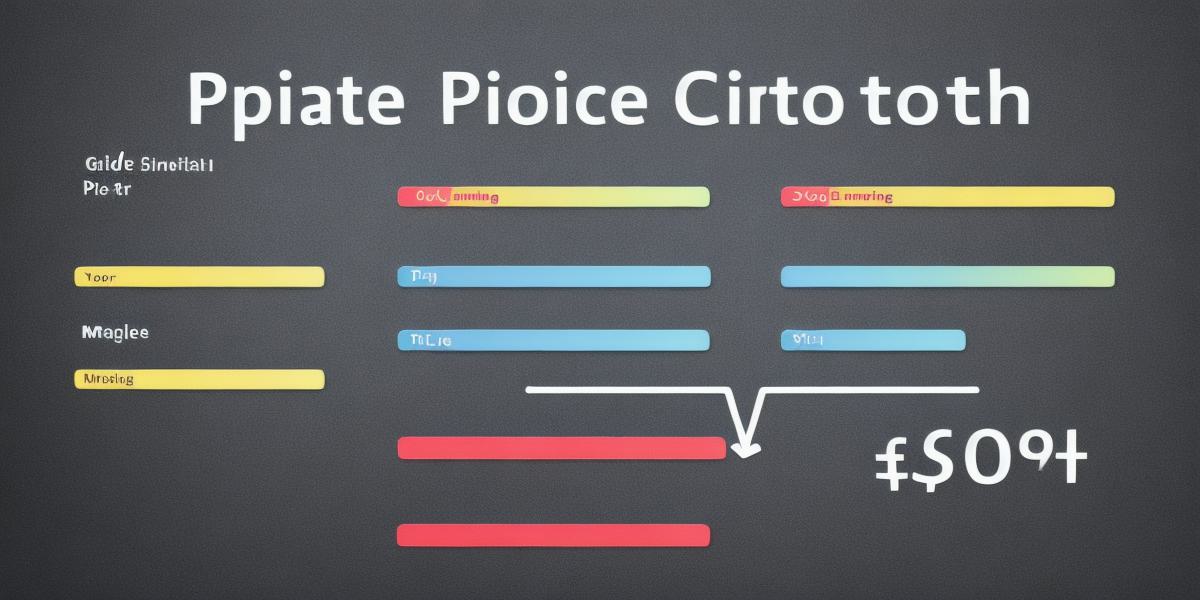Marketing tools have become an essential part of modern marketing strategies. They help businesses automate their marketing efforts, track and analyze their performance, and optimize their campaigns for better results. However, with so many marketing tools available in the market, choosing the right pricing option can be overwhelming. In this article, we will explore the different pricing options available for marketing tools and help you make an informed decision that suits your business needs and budget.
Free vs.
Paid Marketing Tools
: Which One to Choose?
Free Marketing Tools
Free marketing tools are a great option for small businesses with limited resources. They provide basic functionalities that allow businesses to manage their marketing efforts, track their performance, and optimize their campaigns. Some popular free marketing tools include
Hootsuite
,
Buffer
,
Canva
, and
Google Analytics
.
Pros of
Free Marketing Tools
:
-
Affordable for small businesses with limited budgets.
-
Provides basic functionalities that meet the needs of most businesses.
-
Allows businesses to test different tools before committing to a paid option.
-
Offers a range of pricing options for premium features, including monthly and annual plans.
Cons of
Free Marketing Tools
:
-
Limited functionality compared to paid tools.
-
Restrictions on usage, such as the number of users or social media accounts that can be managed.
-
Limited analytics and reporting capabilities.
-
Requires manual management, which can be time-consuming for businesses with multiple campaigns and channels.
Paid Marketing Tools
Paid marketing tools offer more advanced features and functionalities compared to free tools. They provide detailed analytics, automation, and optimization capabilities that help businesses scale their marketing efforts and achieve better results. Some popular paid marketing tools include
HubSpot
,
Marketo
,
Salesforce
, and SEMrush.
Pros of
Paid Marketing Tools
:
-
Provides advanced functionalities that meet the needs of larger businesses.
-
Offers detailed analytics and reporting capabilities for better decision-making.
-
Provides automation and optimization features for efficient marketing campaigns.
-
Allows businesses to customize their marketing strategies according to their unique needs and goals.
Cons of
Paid Marketing Tools
:
-
More expensive than free tools, with recurring subscription fees.
-
Requires technical expertise to set up and manage effectively.
-
May require significant investment in training and support.
-
Can be overwhelming for small businesses with limited resources and expertise.
Choosing the Right
Pricing
Option: A Case Study
Let’s take a look at a case study to understand how businesses can choose the right pricing option for their marketing needs.
John Doe, Marketing Manager of XYZ Company
John is a marketing manager at XYZ company, which specializes in selling software solutions for small businesses. He has a team of five marketers and a budget of $50,000 per year for marketing campaigns.
The Problem
XYZ company’s current marketing efforts were not generating enough leads and conversions. John was looking for a new marketing tool that could automate their campaigns, track their performance, and optimize them for better results. He had two options:
Hootsuite
and
HubSpot
.
The Decision
After evaluating both tools, John decided to go with
HubSpot
. Although
HubSpot
was more expensive than
Hootsuite
, it offered advanced features such as automation, analytics, and reporting that were essential for his team’s success. He also had access to a dedicated support team that could help him set up the tool and manage it effectively.
The Result
After implementing
HubSpot
, John was able to automate their marketing campaigns and track their performance in real-time. His team was able to generate more leads and conversions, which resulted in an increase in revenue for the company. The investment in
HubSpot
paid off, and John was glad that he made the right decision.
Factors to Consider When Choosing a Marketing Tool
When choosing a marketing tool, there are several factors to consider, including:
Functionality
The functionality of the tool should meet your business needs and goals. Evaluate the features and functionalities offered by the tool and determine whether they align with your objectives.
Pricing
Pricing is a crucial factor to consider when choosing a marketing tool. Evaluate the pricing options available, including monthly, annual, or pay-per-use plans. Determine whether the pricing model fits your business budget and resources.
Integration
The tool should integrate with other tools and systems used by your business, such as CRM, CMS, and social media platforms.
Customization
The tool should allow you to customize your marketing strategies according to your unique needs and goals.
Support
The tool should provide access to dedicated support and resources, including training, documentation, and customer service.
Comparing Marketing Tools: A Comprehensive Guide
When it comes to choosing a marketing tool, there are several options available in the market. Here’s a comprehensive guide to help you compare different marketing tools based on their features, pricing, and functionality.
Hootsuite
Hootsuite is a social media management tool that allows businesses to manage their social media accounts, track analytics, and automate campaigns. It offers several pricing plans, including free, pro, and enterprise plans. The free plan provides basic functionalities, while the pro and enterprise plans offer advanced features such as analytics, scheduling, and team collaboration.
Buffer
Buffer is a social media scheduling tool that allows businesses to schedule social media posts across multiple platforms, track analytics, and automate campaigns. It offers several pricing plans, including free, pro, and business plans. The free plan provides basic functionalities, while the pro and business plans offer advanced features such as analytics, team collaboration, and scheduling in advance.
Canva
Canva is a graphic design tool that allows businesses to create professional-looking graphics, flyers, and presentations. It offers several pricing plans, including free, pro, and enterprise plans. The free plan provides basic functionalities, while the pro and enterprise plans offer advanced features such as custom templates, team collaboration, and branding.
Google Analytics
Google Analytics is a web analytics tool that allows businesses to track website traffic, user behavior, and conversion rates. It offers a free version that provides basic functionalities, as well as paid versions that offer advanced features such as goal tracking, funnel analysis, and custom reporting.
HubSpot
HubSpot is an all-in-one marketing, sales, and service platform that allows businesses to automate their marketing campaigns, track analytics, and manage customer relationships. It offers several pricing plans, including free, starter, pro, and enterprise plans. The free plan provides basic functionalities, while the starter, pro, and enterprise plans offer advanced features such as email marketing, lead generation, and sales automation.
Marketo
Marketo is a marketing automation tool that allows businesses to automate their marketing campaigns, track analytics, and manage customer relationships. It offers several pricing plans, including free, essentials, select, pro, and enterprise plans. The free plan provides basic functionalities, while the essentials, select, pro, and enterprise plans offer advanced features such as email marketing, lead generation, and social media automation.
Salesforce
Salesforce is a customer relationship management (CRM) tool that allows businesses to manage customer interactions, track leads, and automate sales processes. It offers several pricing plans, including free, sales, service, and enterprise plans. The free plan provides basic functionalities, while the sales, service, and enterprise plans offer advanced features such as email marketing, lead generation, and analytics.
Zoho Campaigns
Zoho Campaigns is an email marketing tool that allows businesses to create professional-looking emails, track analytics, and automate campaigns. It offers several pricing plans, including free, standard, pro, and enterprise plans. The free plan provides basic functionalities, while the standard, pro, and enterprise plans offer advanced features such as A/B testing, drip email, and custom workflows.
ConvertKit
ConvertKit is an email marketing tool that allows businesses to create professional-looking emails, track analytics, and automate campaigns for online course creators and bloggers. It offers several pricing plans, including free, plus, advanced, and enterprise plans. The free plan provides basic functionalities, while the plus, advanced, and enterprise plans offer advanced features such as automation, landing pages, and integrations with popular tools.

FAQs
What is a marketing tool?
A marketing tool is software or platform that helps businesses automate their marketing campaigns, track analytics, and manage customer relationships.
How much does a marketing tool cost?
The cost of a marketing tool varies depending on the plan and features offered. Some tools offer free plans, while others require payment for access to advanced features.
What are some popular marketing tools?
Some popular marketing tools include
Hootsuite
,
Buffer
,
Canva
,
Google Analytics
,
HubSpot
,
Marketo
,
Salesforce
,
Zoho Campaigns
, and
ConvertKit
.
How do I choose the right marketing tool for my business?

When choosing a marketing tool, consider your business needs and goals, budget, integration requirements, customization options, and support resources. It’s also important to compare different tools based on their features and pricing plans to determine which one aligns best with your objectives.




